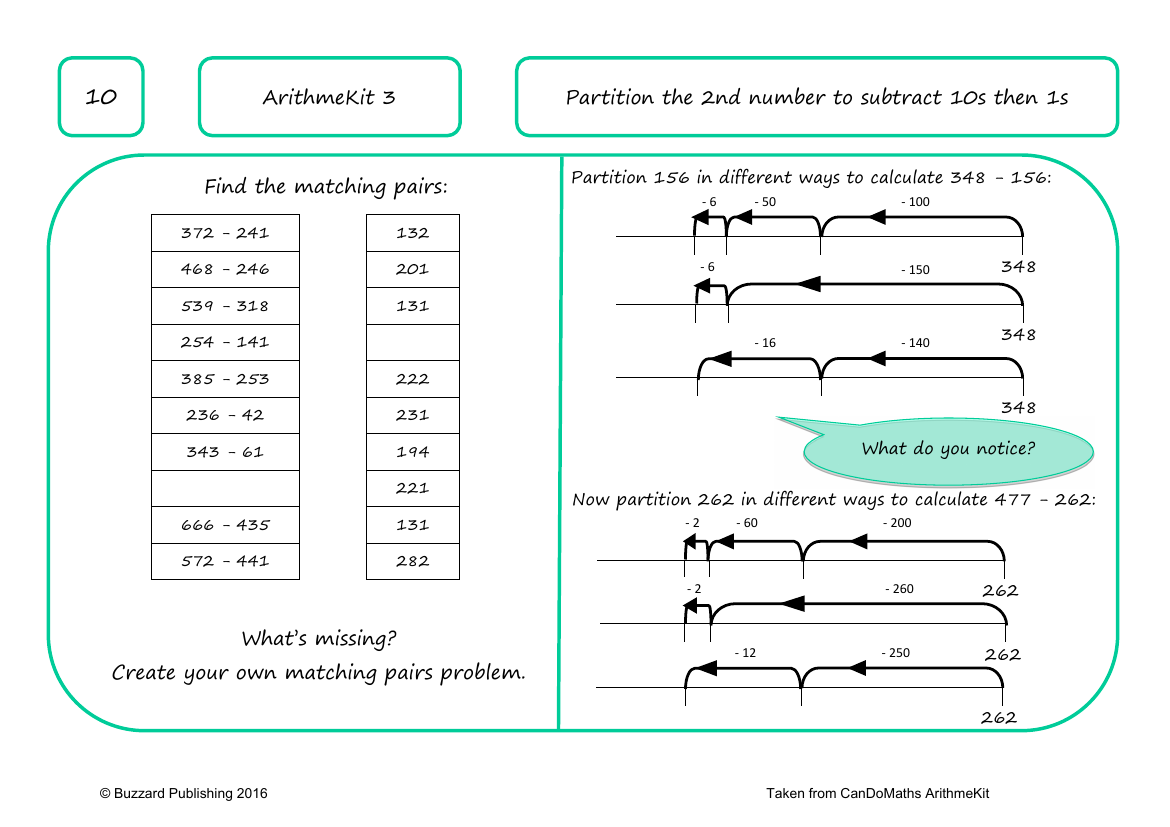Partition the 2nd number to subtract 10s then 1s

Maths Resource Description
The ArithmeKit 3 10 from Buzzard Publishing, taken from the CanDoMaths ArithmeKit, offers a practical approach to teaching subtraction by partitioning numbers. This method involves breaking down the second number in a subtraction problem into tens and then ones, which simplifies the calculation process. For example, to subtract 156 from 348, one can partition 156 into 150 and 6, and then subtract these parts separately from 348. This technique can also be applied to the number 262 when subtracting it from 477, by partitioning it into 200, 60, and 2, or other combinations such as 260 and 2, or 250 and 12. Through these exercises, students are encouraged to notice patterns and relationships between numbers, enhancing their understanding of subtraction.
Additionally, the ArithmeKit includes activities to develop critical thinking and problem-solving skills. Students are tasked with finding matching pairs and creating their own problems. In one instance, Coco thinks that 352 minus 38 equals 326, justifying it by rounding and subtracting the tens and then the ones separately. Students must evaluate whether they agree or disagree with Coco's method. They are also invited to use a set of digits from 0 to 9 to complete various subtraction problems, ensuring each digit is used only once. This not only reinforces the concept of partitioning but also introduces an element of challenge as they determine if there is more than one correct way to solve a problem. The resource further encourages the use of practical tools like number lines to confirm answers, such as proving that 465 minus 236 equals 229.
